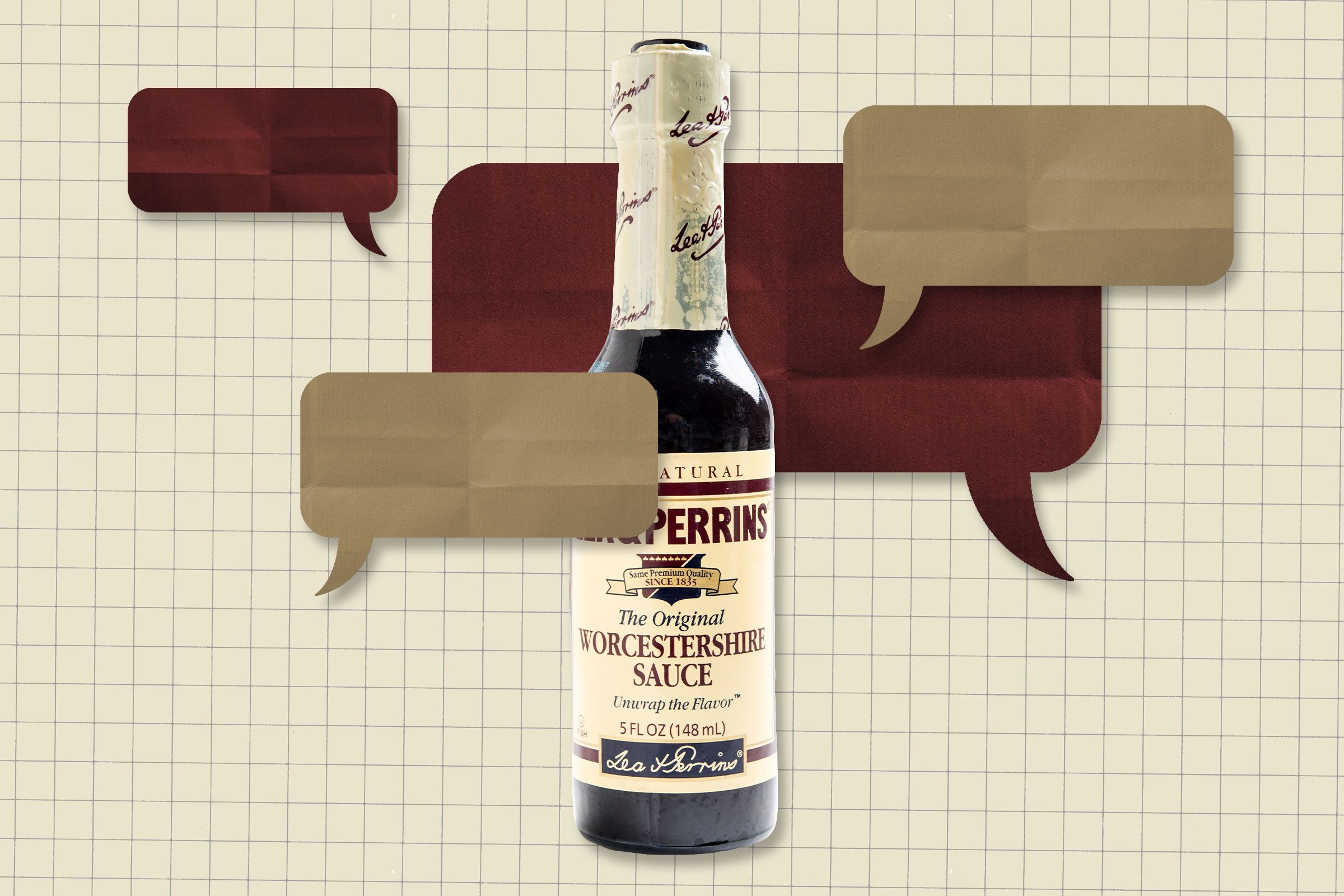Wor-ces-ter-shire? Wo-chess-ter-shire? Wer-ches-ter? Learn the correct Worcestershire pronunciation once and for all.

This Is the Correct Pronunciation of “Worcestershire”

If there were an official list of the hardest words to pronounce in the English language, Worcestershire sauce would definitely earn a permanent spot. Honestly, no one would blame you if your first attempt at enunciating it sounds something like war-ches-ter-shire—the Worcestershire pronunciation is notoriously tricky.
Don’t worry, though. Today, we’ve got the lowdown on how to pronounce Worcestershire the right way. And if you’ve ever wondered where this commonly mispronounced word came from, we’ve got that scoop for you too. Like many iconic foods, Worcestershire sauce takes its name from the place it was first bottled up for the world: Worcestershire, England.
If you’re a condiments fan who wants to order this steak dinner add-on as easily as Buffalo sauce and Sriracha, you’re in the right place. Read on to learn exactly how to pronounce Worcestershire without tripping over your tongue.
Get Reader’s Digest’s Read Up newsletter for more knowledge, tech, travel, cleaning, humor and fun facts all week long.
What’s the correct Worcestershire pronunciation?
For those of us who didn’t grow up in the U.K., the Worcestershire pronunciation seems more like a test or tongue-twister. Here’s a breakdown of the right way to say this food name:
- Avoid pronouncing the first r altogether.
- Skip the ce while you’re at it.
- Barely say the second r.
So you’ll start the word off by saying “wooster” and finish with the British “shire,” as in “Woostershire.”
Still confused? Listen to this audio clip by PronunciationLexicon to hear someone say it properly.
Where did Worcestershire sauce come from?
Why, from Worcestershire, naturally. And yes, that’s a real place.
Worcester, England, located about two hours north of London, is a historic town in the county of Worcestershire. (You may have noticed that a lot of place names in Britain have the ending shire, a word synonymous with American English’s county.) It’s most famous for its primary invention: Worcestershire sauce.
That’s why our pronunciation of the word takes after the British pronunciation of the town and county. But that’s not the only place where you’ll contend with the tricky “Worcester” construction. The city of Worcester, Massachusetts, was named after the English town and is pronounced just the same. (Which means residents definitely have a leg up on us when it comes to the Worcestershire pronunciation!)
What is Worcestershire sauce?
Worcestershire sauce is a unique aromatic blend of soy, vinegar, garlic and a handful of other ingredients, depending on who is manufacturing it. It’s used in recipes ranging from steak marinades to the perfect Bloody Mary. The delicious and diversely used sauce first went on sale in 1837 after it was produced by two chemists, John Wheeley Lea and William Perrins, in the small community of Worcestershire.
The sauce, while based on a recipe used in India, did not grow popular in the West until it was marketed by Lea and Perrins. After an order was placed for a specific blend based on a sauce already used in India, the chemists reportedly put some aside for themselves but, disliking the initial pungent aroma, stored it in their basement and promptly forgot about it.
Years later, they came across their concoction and tried it, immediately deciding to bottle it up and sell it. The sauce did incredibly well, even spawning copycat attempts all over Worcestershire. The Lea & Perrins company keeps the recipes used in Europe and the United States (they’re quite different!) completely secret, but recently, the chemists’ original recipe was found. The ingredients: fish, pickles, peppers and a whole variety of spices. No wonder the dish didn’t do well at first smell (or pronunciation)!
Why trust us
At Reader’s Digest, we’re committed to producing high-quality content by writers with expertise and experience in their field in consultation with relevant, qualified experts. We rely on reputable primary sources, including government and professional organizations and academic institutions as well as our writers’ personal experiences where appropriate. We verify all facts and data, back them with credible sourcing and revisit them over time to ensure they remain accurate and up to date. Read more about our team, our contributors and our editorial policies.
Sources:
- Merriam-Webster: “Worcestershire sauce”
- Merriam-Webster: “Shire”
- YouTube: “How To Pronounce Worcestershire”
- Visit Worcestershire
- BBC: “Worcestershire Sauce”
- The Guardian: “Return to the Worcestershire source”























